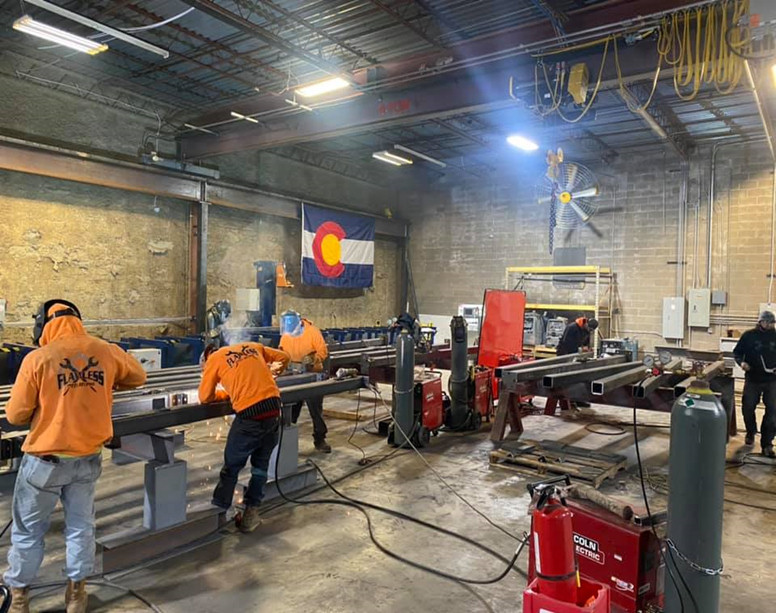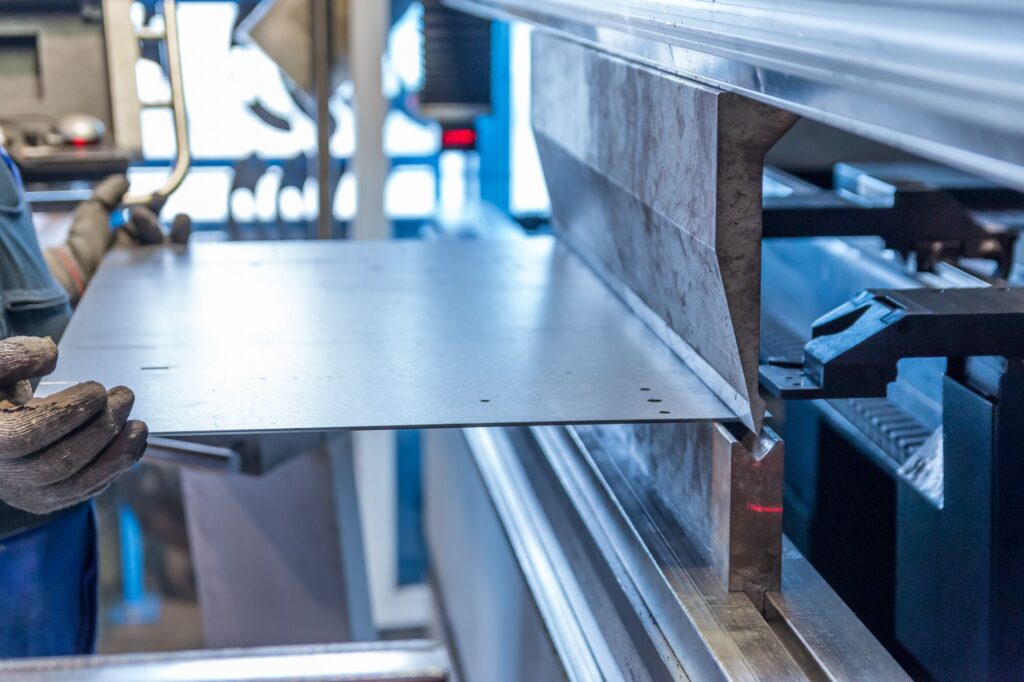Comprehensive Analysis of Cutting-Edge Techniques in Steel Manufacture Market
As the steel fabrication sector remains to evolve, the combination of sophisticated strategies has come to be vital for remaining competitive and satisfying the needs of contemporary production standards. From laser cutting innovations to the usage of robotics and 3D printing in steel production, the landscape of fabrication methods is quickly transforming. With each innovation bringing its own collection of advantages and challenges, a comprehensive evaluation of these strategies is paramount for companies intending to simplify their procedures, enhance precision, and eventually, boost the top quality of their steel fabrication output. In this dynamic market where modern technology plays a crucial role, understanding the nuances of these innovative methods is not simply an alternative but a need for those seeking to advance in the ever-evolving globe of steel construction.
Laser Reducing Improvements
In the realm of steel fabrication, laser reducing improvements have revolutionized the accuracy and performance of steel shaping processes. By harnessing the power of focused laser beams, manufacturers can currently achieve unequaled levels of precision when puncturing numerous types of steels. This innovation allows intricate layouts to be performed with marginal material wastefulness, making it a cost-efficient service for industries calling for high precision parts.
One of the crucial benefits of laser cutting is its ability to handle a wide variety of products, including stainless-steel, light weight aluminum, and carbon steel, easily. The procedure generates clean, burr-free sides, eliminating the requirement for added ending up steps. Moreover, the non-contact nature of laser cutting lowers the risk of material contamination, causing higher quality final product.
Furthermore, laser reducing machines can be programmed to make swift, specific cuts, considerably minimizing manufacturing time compared to traditional cutting techniques. This rate and precision make laser reducing specifically ideal for mass production environments where efficiency is vital. As innovation remains to breakthrough, laser cutting is positioned to play a significantly vital role in the steel fabrication sector.

CNC Machining Innovations
The evolution of CNC machining technologies has actually ushered in a brand-new period of precision and performance in the steel construction industry. Computer System Numerical Control (CNC) makers have changed steel construction by offering unmatched accuracy and repeatability in the manufacturing procedure. steel fabricators melbourne. Among the crucial developments in CNC machining is the assimilation of sophisticated software program systems that allow real-time surveillance and adjustments, bring about enhanced performance and quality control
Moreover, the development of multi-axis CNC makers has actually permitted the manufacture of complex steel elements with detailed styles that were formerly testing to produce. These makers can execute a wide variety of machining procedures, including milling, boring, turning, and grinding, all with high degrees of precision.
In addition, the incorporation of automation and robotics in CNC machining has streamlined manufacturing procedures, lowered lead times, and reduced the margin of error. This combination of sophisticated modern technologies not just increases efficiency but also guarantees regular high quality across all produced steel parts. Finally, CNC machining technologies proceed to drive improvements in the steel manufacture industry, establishing brand-new requirements for accuracy and productivity.
Automated Welding Technologies
Automated welding technologies have actually revolutionized the steel manufacture market, improving efficiency and precision in the welding process. These cutting-edge technologies use computer-controlled systems to automate the welding procedure, resulting in higher productivity levels and improved weld top quality. One of the page key advantages of automated welding is the ability to execute complicated welds with constant precision, lowering the possibility of errors and rework.
Robotic welding systems go to the forefront of automated welding innovations, supplying unrivaled rate and precision. These systems can manage a variety of welding tasks, from simple to complex, effortlessly (steel fixing). By using advanced sensing units and software program, robot welders can adjust to variations in material and joint geometry, making sure an uniform and trusted weld
Furthermore, automated welding technologies boost office safety by decreasing the direct exposure of human welders to harmful fumes and extreme warmth. As the steel fabrication market proceeds to develop, incorporating automated welding modern technologies will certainly be essential for business looking to stay affordable and meet the expanding demands for top notch welded items.
Robotics Combination in Construction
Utilizing robotic systems in fabrication procedures has actually come to be an essential approach for boosting efficiency and precision in contemporary production environments. Robotics combination in steel fabrication supplies a myriad of advantages, consisting of raised performance, enhanced quality assurance, and boosted safety and security procedures. These innovative robot systems are geared up with advanced sensing units and shows capabilities, enabling them to perform elaborate jobs with a high degree of accuracy and repeatability.
Among the crucial benefits look at this website of robotics combination in steel fabrication is the capability to automate recurring jobs, such as material handling, cutting, welding, and assembly processes. This not just speeds up manufacturing cycles but also minimizes the danger of human error, causing higher overall product high quality. In addition, robots can operate 24/7, significantly enhancing production outcome and conference tight job target dates.

3D Printing in Steel Production
Having actually changed the steel manufacture market through robotics assimilation, the burgeoning exploration of 3D printing in steel manufacturing is positioned to more advancement the realm of modern-day manufacturing strategies. 3D printing, also called additive manufacturing, uses extraordinary design flexibility and intricacy, allowing the production of complex steel frameworks that were previously unattainable through traditional production approaches. By using computer-aided style (CAD) software, makers can specifically manage the layer-by-layer deposition of steel product, resulting in parts with improved capabilities and geometries.
One of the key advantages of 3D printing in steel manufacturing is its capability to lower material waste significantly. Unlike subtractive production processes where excess product is cut away, 3D printing just utilizes the essential amount of steel needed for the last part. This efficiency not only results in set you back savings however additionally straightens with lasting manufacturing practices by decreasing ecological impact.
Furthermore, 3D printing enables rapid prototyping and personalization, enabling the production of tiny batches of intricate steel components with short preparations. As the modern technology remains to mature and end up being extra obtainable, its assimilation right into mainstream steel fabrication procedures is expected to drive innovation and efficiency across the industry.
Final Thought
Finally, the steel construction sector has actually seen substantial innovations in techniques such as laser cutting, CNC machining, automated welding, robotics integration, and 3D printing. These cutting-edge innovations have actually revolutionized the way steel items are made, leading to increased effectiveness, cost-effectiveness, and accuracy. Continued investment in these ingenious methods is crucial for the sector to stay affordable and fulfill the needs of contemporary production processes.
As the steel construction industry continues to evolve, the integration of sophisticated strategies has ended up being necessary for staying affordable and fulfilling the needs of contemporary production standards.One of the crucial advantages of laser cutting is its ability to manage a wide range of materials, including stainless steel, light page weight aluminum, and carbon steel, with simplicity.Automated welding modern technologies have actually changed the steel construction industry, enhancing efficiency and accuracy in the welding process.Having changed the steel manufacture sector through robotics assimilation, the burgeoning exploration of 3D printing in steel production is positioned to more advance the world of modern production strategies.In conclusion, the steel manufacture market has actually seen considerable advancements in techniques such as laser cutting, CNC machining, automated welding, robotics combination, and 3D printing.